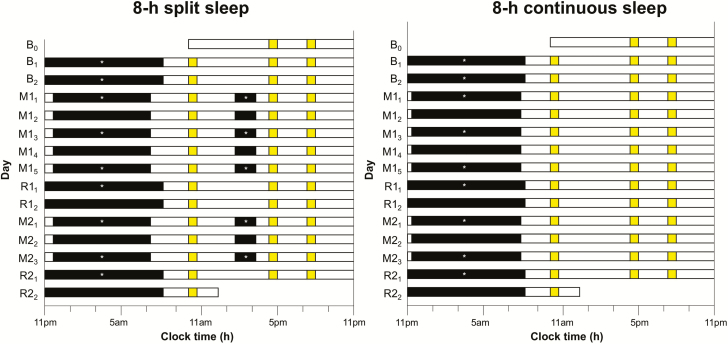Figure 1.
Protocol. In this 15-day protocol, both the 8-h split sleep group and the 8-h split continuous group had two adaptation and baseline nights (B1 and B2; TIB indicated by black bars = 9 h from 11:00 pm to 08:00 am). The first cycle of sleep opportunity manipulation lasted 5 nights (M11–M15) followed by two nights of recovery sleep (R11 and R12; TIB = 9 h). The second cycle consisted of three manipulation nights (M21–M23) and two recovery nights (R21 and R22). During the two sleep opportunity manipulation periods, the split sleep group had a nocturnal TIB of 6.5 h (00:15 am–06:45 am) and a 1.5-h nap opportunity between 2:00 pm and 3:30 pm, while the continuous sleep group had a nocturnal TIB of 8 h (11:30 pm–07:30 am). Asterisks indicate nocturnal sleep and daytime nap episodes with polysomnographic recordings. A cognitive test battery (yellow bars) was administered at 10:00 am, 4:15 pm, and 8:00 pm daily, except during the first and last days of the protocol.

